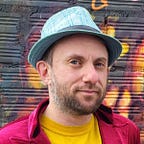Do We Shine a Light Into the Dark Ages…
…or does it illuminate what we know of ourselves? Gabriele and Perry’s ‘Bright Ages’
What people call medieval is a realm of myth, “useful to people with dangerous intentions.” Sometimes white supremacists use it to locate a false “origin story for whiteness.” People project on this period what they want to find there.
So write Matthew Gabriele and David M. Perry in The Bright Ages: A New History of Medieval Europe.
Many people in Europe’s so-called “Dark Ages” traveled widely and educated themselves. Sometimes they were motivated by fear and aggression, and sometimes their movements were not voluntary. Often, though, they were open and curious. And “moments of sparkling creativity were not solely the province of great men,” Gabriele and Perry assure us.
What Do We See When We Open to Seeing More?
Where should we begin to discuss a historical period? How about in the fifth century CE, in a little chapel in Ravenna, Italy, known as the Mausoleum of Galla Placidia? A chapel in which “artists pressed into fresh mortar glass tesserae, small trapezoidal shapes infused with the blue of lapis lazuli, to turn the ceiling into the richest blue sky.”
“…we don’t need to start…
